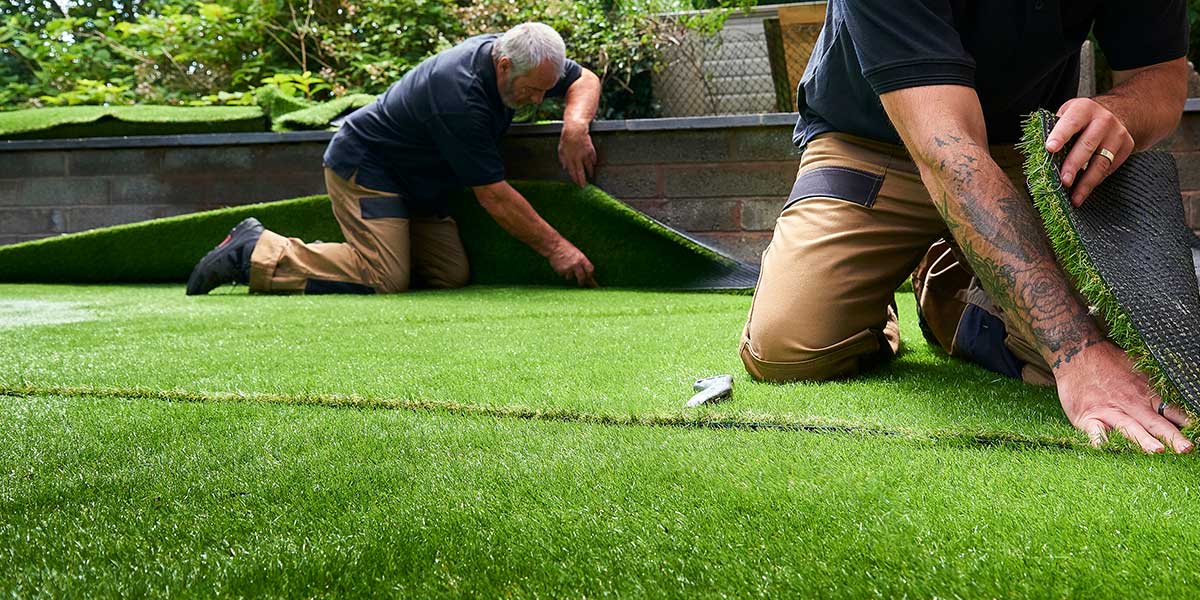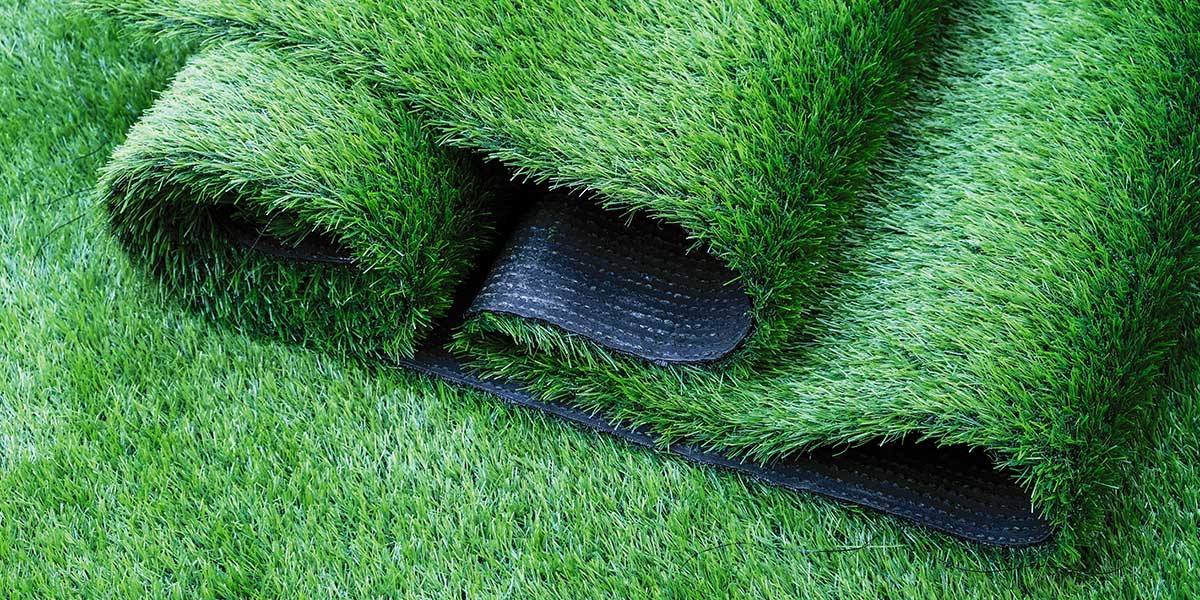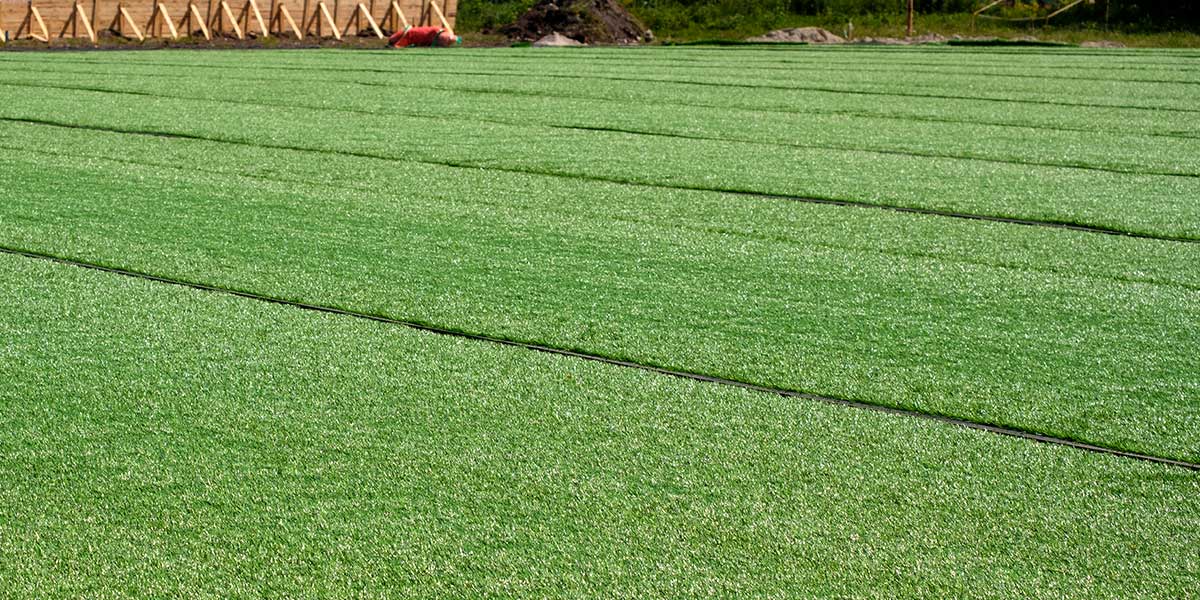Do you want to make your garden lush? Or do you have a sports club and you want to cover the sports fields with green grass? Then we invite you to get to know artificial grass and learn about its differences.
What are The Differences Between Natural and Artificial Grass?

There are several differences between natural and artificial grass, including:
- Appearance: Natural grass has a more varied appearance, with variations in color, texture, and thickness depending on the species, climate, and soil conditions. Artificial grass, on the other hand, has a uniform appearance and can look somewhat plastic or fake.
- Maintenance: Natural grass requires regular maintenance, including mowing, watering, fertilizing, and weeding. Artificial grass requires much less maintenance, mainly just occasional brushing to keep the fibers upright and remove debris and leaves.
- Durability: Natural grass is vulnerable to damage from foot traffic, weather, and pests, while artificial grass rug is much more durable and resistant to wear and tear. However, it can still be damaged by heavy objects or sharp objects, and it may become discolored or deformed over time due to exposure to UV rays.
- Environmental impact: Natural grass is a sustainable, renewable resource that supports biodiversity, absorbs carbon dioxide, and reduces erosion. Artificial grass, on the other hand, is made from petroleum-based materials, does not support biodiversity, and cannot absorb carbon dioxide.
- Cost: While natural grass is generally less expensive to install than artificial grass, it requires ongoing maintenance costs, which can add up over time. Artificial grass has a higher upfront cost but requires minimal ongoing maintenance, which can make it more cost-effective in the long run.
Overall, the choice between natural and artificial grass depends on factors such as personal preference, budget, climate, and intended use. Natural grass is best suited for outdoor spaces that are frequently used and where sustainability is a priority, while artificial grass is ideal for spaces where low maintenance and durability are important.
Why Prefer Artificial Grass?
There are several reasons why someone may prefer artificial grass over natural grass:
Artificial grass requires much less maintenance than natural grass, which can save time, money, and resources. There is no need to mow, water, or fertilize, and there is minimal weeding required.
Artificial grass is highly durable and resistant to wear and tear, making it ideal for high-traffic areas such as sports fields, playgrounds, and commercial properties. It can withstand harsh weather conditions and does not require reseeding or replanting.
Artificial grass has a uniform appearance and does not change with the seasons, making it an ideal choice for those who want a consistent, well-manicured look year-round.
Is The Game Different from Artificial Grass than that of Natural Grass?

The game can be different on artificial grass compared to natural grass due to the following factors described by Integral Turf, which is a leading artificial grass manufacturer.
- Ball bounce: The ball may bounce differently on artificial grass than on natural grass, depending on the type of surface and infill material used. This can affect the trajectory of the ball and the way it moves, making it more difficult for players to control.
- Traction: Players may have different levels of traction on artificial grass compared to natural grass, depending on the surface and infill material used. This can affect their speed, agility, and ability to change direction quickly.
- Heat: Artificial grass can absorb and retain more heat than natural grass, which can make the playing surface hotter and more uncomfortable for players. This can also increase the risk of heat-related injuries, such as dehydration and heat stroke.
- Impact absorption: The level of impact absorption on artificial grass may be different than on natural grass, which can affect the way players land and move. This can increase the risk of injuries, such as sprains and fractures.
In short, the game can be different on artificial grass installation compared to natural grass, but the extent of the difference depends on factors such as the type of surface, infill material, and maintenance practices. Some players and teams may prefer artificial grass for its consistency and durability, while others may prefer natural grass for its unique playing characteristics and environmental benefits.

